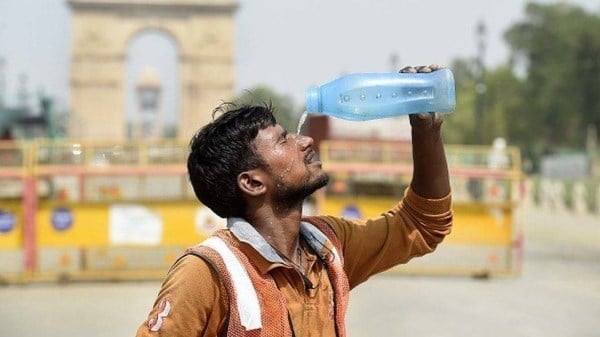New Delhi suffers at 49 °C
An extreme heatwave hits India, triggering a spike in temperature.
-

An extreme heatwave hits India.
An extreme heatwave is spreading through northern India, with temperatures reaching a record 49.2 degrees Celsius in sections of the capital, New Delhi. This is the capital's fifth heatwave since March.
Temperatures are expected to continue high in several parts of the country, prompting officials to advise residents to take precautions.
They cautioned that the heat could endanger the health of the most vulnerable people, such as infants, the elderly, and those suffering from chronic ailments.
Temperatures in Himachal Pradesh, Haryana, Uttarakhand, Punjab, and Bihar have been especially high in recent days, according to India's weather service.
There is an expected 2-4 degrees Celsius decline in some regions, but there may be little relief from the extreme heat.
Heat wave warnings:
— India Meteorological Department (@Indiametdept) May 14, 2022
Heat Wave conditions in most parts with severe heat wave conditions in many parts very likely over West Rajasthan on 14th; heat wave conditions in many parts with severe heat wave conditions in isolated pockets over the same region on 15th May. pic.twitter.com/eBzc82XUF3
Severe heatwaves have disrupted millions of people's lives and livelihoods in northern India this summer.
As temperatures soared quicker than usual earlier this month, Prime Minister Narendra Modi directed state chief ministers to develop plans to alleviate the impact of excessive heat.
While heatwaves are typical in India, particularly in May and June, summer started early this year, with high temperatures beginning in March, when the first heatwave came. The month's average maximum temperatures were the highest in 122 years.
Read next: India and Pakistan face unprecedented, scorching heat
As a result of the heat, farmers believe unexpected temperature surges have harmed their wheat crop, a phenomenon that might have worldwide ramifications given supply bottlenecks caused by the Ukraine war.
The heat has also increased power demand, causing disruptions in many states and raising concerns about coal scarcity.
Summers have historically been brutal in many parts of India, particularly in the north and center. Even before air conditioners and water coolers became popular, people devised their methods of dealing with the heat, from keeping water cool in earthen jars to smearing raw mangoes on their bodies to prevent heat strokes.
However, many scientists believe that India is currently seeing more intense, frequent, and longer-lasting heat waves.

 2 Min Read
2 Min Read








